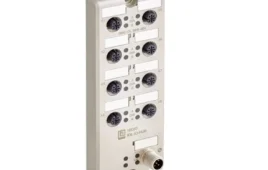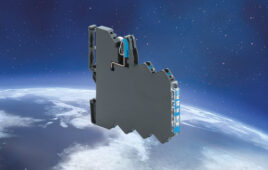A team from Stevens Institute of Technology consisting of undergraduate student Sean Lyttle, along with graduate students: Wuming Jing, Xi Chen, and Zhenbo Fo and lead by Professors David Cappelleri, Jan Nazalewicz, and Yong Shi from the Department of Mechanical Engineering, placed third in the Freestyle Competition of the IEEE/National Institute of Standards and Technology (NIST) Mobile Microrobotics Challenge held at the IEEE International Conference on Robotics and Automation in Anchorage, Alaska from May 3-10, 2010. The Stevens team was one of only 6 teams to qualify for the final round of the Mobile Microrobotics Challenge held at the conference.

Stevens µMAB Microrobot Design
The team designed and manufactured a micro-scale magnetostrictive asymmetric thin film bimorph (µMAB ) microrobot for the competition. Utilizing the magnetostrictive principle, different bending and blocking forces occur under the arched µMAB due to the in-plane strain generated in the bimorphs by the application of oscillating external magnetic fields in the workspace of the microrobot. The differences in the resulting frictional forces drive the movement of the robot body.
All robots entered in the competition were no bigger than 600 micrometers in their largest dimension and were required to operate without the direct connection of wires i.e. untethered operation. The competition consisted of three events structured to test each microrobot’s speed, agility, and ability to manipulate small objects.
The Two-Millimeter Dash: Microrobots are required to sprint across a distance of two millimeters, beginning from a dead stop, and come to rest in a defined location.
Microassembly: Microrobots must insert pegs into designated holes in a planar assembly framework.
Freestyle Competition: Event to highlight the strengths of their microrobot design by performing a task of the teams choosing.
Stevens participated in both the Two-Millimeter Dash and Freestyle Competition events at the Challenge. The team’s µMAB microrobot had one of the fastest individual run of the Two-Millimeter Dash event at only 0.027 sec. The final scoring for the event was the average time across three runs, therefore the team placed 5th out of 11 teams for this event.
In the Freestyle Competition, the team programmed their microrobot to automatically move in a both a square and X-shaped pattern inside the 3 mm x 2 mm playing field. Stevens placed third in the Freestyle Competition behind teams from ETH Zurich and Carnegie Mellon University, respectively.
Materials of Construction: Nickel and Copper
Drive Mechanism: Externally Applied Magnetic Fields
Capabilities: The µMAB’s are capable of being controlled with both oscillating and gradient magnetic fields. Properly tuned oscillating fields cause vibrations in the robot resulting in turning or walking. Gradient magnetic fields can be used for steering the robot or for pushing/pulling of the robot for very fast movements.
Stevens Institute of Technology
www.stevens.edu
IEEE
www.ieee.org
National Institute of Standards and Technology
www.nist.gov
::Design World::
Filed Under: Commentaries • insights • Technical thinking, TEST & MEASUREMENT, Mechatronics





Tell Us What You Think!